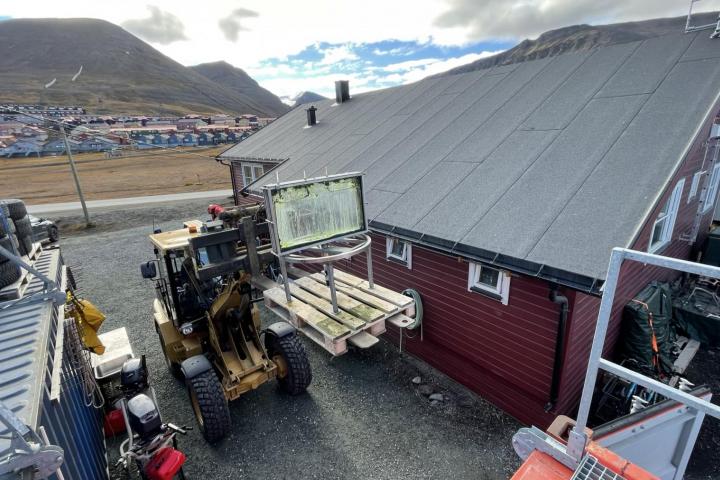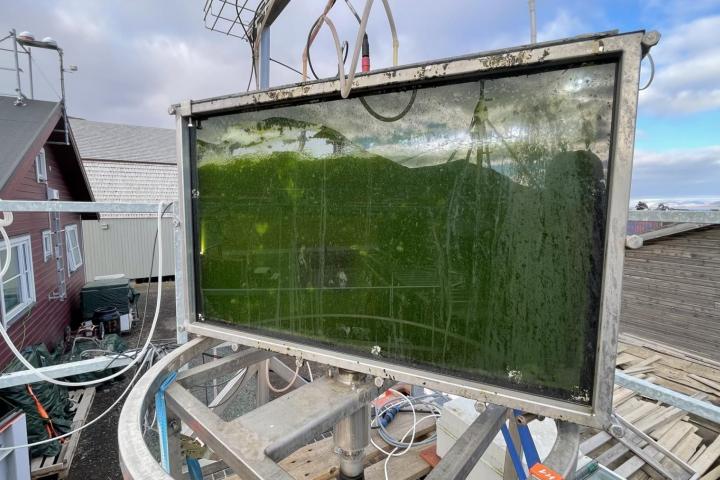
Research activities in the Arctic region are becoming increasingly important in the context of ongoing climate change. There is a dramatic loss of glaciation, which is also changing the behaviour of living organisms. This problem is discussed in more detail by prof. Ing. Josef Elster, CSc. from the Centre for Polar Ecology of the Faculty of Science of the University of South Bohemia. The research focuses on the cultivation of polar microalgae, often referred to as snow algae, which can grow at low temperatures. Snow microalgae produce carotenoids and unsaturated fatty acids, which can be further used for the production of pharmaceutical or food products. The photobioreactor can also be used for wastewater treatment, where microalgae use nutrients contained in wastewater for their growth. This application also has the potential to take hold in Arctic conditions, as there is an expansion of populated areas and therefore an increase in the production of wastewater that would otherwise be discharged into the sea. In this way, waste substances can be transformed into useful products with higher added value.
For the purpose of cultivation, a unique photobioreactor had to be designed that would allow efficient growth of microalgae in the extreme conditions of the Arctic region. Microalgae generally require light radiation and sufficient nutrients in the culture medium for their growth. The design of the photobioreactor consists of a rotating plate photobioreactor chamber and additional measuring apparatus. "The unique rotatable design allows the photobioreactor plate to be rotated according to the current position of the sun. The incident light is thus efficiently used throughout the entire volume of the photobioreactor during the day, resulting in a significant increase in the overall yield of microalgae," explains Ing. Mgr. Vojtěch Bělohlav, Ph.D. from the Institute of Process and Processing Technology of the Faculty of Mechanical Engineering of the Czech Technical University. The work on the rotatable photobioreactor design was developed as part of the bachelor thesis of student Karel Šnokhouse. The uniqueness of the solution consisted mainly in ensuring continuous rotation of the chamber, even assuming that it is necessary to continuously supply the processed medium with aeration gas and monitor the operating conditions using measuring probes. "When designing the rotating structure, it was also necessary to take into account the conditions of the surrounding environment where the photobioreactor will be installed. There is an outdated coal mine near the Czech Arctic Research Station in the world's northernmost town of Longyearbyen in Spitsbergen. The salty, humid air also contains large amounts of coal dust. In combination with the relatively low temperatures, it is therefore necessary to ensure that all rotating components are resistant to external influences," adds Vojtěch Bělohlav.
The rotating photobioreactor underwent a pilot test in the summer months, during which different operating conditions for microalgae cultivation were tested. "According to the initial measurement results, the designed photobioreactor achieved very good results in the framework of the research activities of the programme for the use of CO2 to produce valuable chemicals, the so-called Bio-CCS technology, and the design withstood extreme external conditions. As the end of the polar day approached, it was also necessary to evaluate the technical condition of the technology after the pilot test and to ensure the preservation of the equipment for the next measurement campaign. In view of the successful operation of the photobioreactor, it is planned to extend the protection of the device concept from a utility model to a national or international patent. Furthermore, it is also planned to prepare follow-up projects focused on unique photobioreactors for cultivation of microalgae in extreme conditions of the Arctic or Antarctica," explains Prof. Ing. Tomáš Jirout, Ph.D., Head of the Institute of Process and Processing Technology at the Faculty of Mechanical Engineering of CTU.


